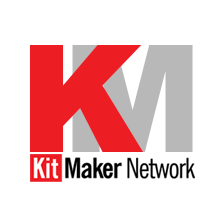- Thread starter
- #21
Builder 2010
Staff Sergeant
I had 3D printed some 1:24 pipe fittings for last years NASCAR car build and I was able to put one to use as the fuze terminator for the new metal antenna.

I then installed two ridiculous PE ribs that adorn the top of the fuze. I hate gluing this on a 0.005" edge. I used a combo of J-B Structural Cement and CA in that order. The J-B will hold a bit longer and more secure to the metal/styrene bond, and the CA helped hold it all in place until the J-B sets (which is sloooooowwww). The first one was a bit of a fuss.

The second one was much easier…. learning curve. If I had to do a third it would even be better.

I put the fuze asside so all this would cure solid and got to work on the GE engines. This kit suffers from part over-indulgence. There are parts with glue surfaces that are much less than 1mm sq. They are so fragile and untrusty worthy that I'm considering closing both engine bays and not worrying about it. For the Seahawk I used the ResKit engine and now I know why. Doing all the doodads in styrene is folly.
The first horror was this pipe array that HANGs on the side. One end glued into the engine proper, the valve body glues to a tiny appendage hanging from a pipe array that glues into two spots on the engine.
That hanging joint came apart three times.

Making matters worse is another pipe that's supposed to tie into the top of the valve body and glue to another pipe that's just hanging out there. Then came the accessory drive. Instead of molding all the various bits to the one side of the two-piece body, they made them all separate pieces. I lost one. And there's an oil-filter looking thing that's even attached in a more precarious way (if that's even possible). This piece fell off three times. I used Tamiya Cement. Then Bondic and then CA. None of it worked. Bondic, doesn't always adhere too well to styrene, and didn't in this case.
I've thought about replacing all the piping with metal and/or reinforcing these tiny joints with wire. Trouble is that the joint are so tiny that even drilling with a 0.010" drill weakens them further causing more breakage. The kit is over-engineered to drive up parts count. While it impresses, it doesn't make for a satisfying build.

I then installed two ridiculous PE ribs that adorn the top of the fuze. I hate gluing this on a 0.005" edge. I used a combo of J-B Structural Cement and CA in that order. The J-B will hold a bit longer and more secure to the metal/styrene bond, and the CA helped hold it all in place until the J-B sets (which is sloooooowwww). The first one was a bit of a fuss.
The second one was much easier…. learning curve. If I had to do a third it would even be better.
I put the fuze asside so all this would cure solid and got to work on the GE engines. This kit suffers from part over-indulgence. There are parts with glue surfaces that are much less than 1mm sq. They are so fragile and untrusty worthy that I'm considering closing both engine bays and not worrying about it. For the Seahawk I used the ResKit engine and now I know why. Doing all the doodads in styrene is folly.
The first horror was this pipe array that HANGs on the side. One end glued into the engine proper, the valve body glues to a tiny appendage hanging from a pipe array that glues into two spots on the engine.
That hanging joint came apart three times.
Making matters worse is another pipe that's supposed to tie into the top of the valve body and glue to another pipe that's just hanging out there. Then came the accessory drive. Instead of molding all the various bits to the one side of the two-piece body, they made them all separate pieces. I lost one. And there's an oil-filter looking thing that's even attached in a more precarious way (if that's even possible). This piece fell off three times. I used Tamiya Cement. Then Bondic and then CA. None of it worked. Bondic, doesn't always adhere too well to styrene, and didn't in this case.
I've thought about replacing all the piping with metal and/or reinforcing these tiny joints with wire. Trouble is that the joint are so tiny that even drilling with a 0.010" drill weakens them further causing more breakage. The kit is over-engineered to drive up parts count. While it impresses, it doesn't make for a satisfying build.


